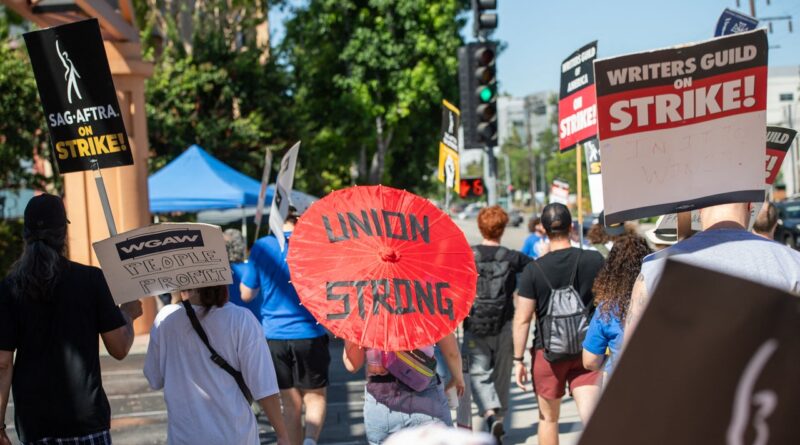What Is a Scab? Actors and Other Workers Who Cross the Picket Line
When a worker goes on strike, their employer often stops paying them, meaning they run the risk of not being able to afford living expenses like rent, mortgage payments, or food. Employers know this and use it to their advantage. As one Hollywood studio executive told Deadline, “The endgame is to allow things to drag on until union members start losing their apartments and losing their houses.”
Workers make these sacrifices because they believe the short-term losses will be worth the long-term gains they’ll make by going on strike. When an employer calls in outside replacement workers or when a worker betrays their union by crossing a picket line, they undermine the power of the strike by allowing business to continue as usual, leaving only the workers to suffer the consequences. As London wrote, “To strike at a man’s food and shelter is to strike at his life.”
In this way, scabbing invokes a long, bloody history of violence against workers, in which private security forces, police, and even the National Guard have been deployed to quell labor unrest. In a number of cases, these strikebreaking tactics resulted in massacres.
What are some examples of scabbing?
If striking academic workers refuse to enter grades as part of their strike, grading those workers’ ungraded papers is a form of scabbing – even if you’re not a member of the union. When thousands of factory workers at John Deere went on strike in 2021, the company brought in non-union salaried workers to replace them. That’s also scabbing.
What’s the proper etiquette to follow when workers are on strike?
As a general rule, you should avoid crossing a picket line or undermining a strike at all costs. Informing yourself about the issues that precipitated the strike and listening to what the workers have to say goes a long way. Workers will often tell the public how they can support their strike. This could include joining a picket line, donating to a strike fund to ease financial hardships, or engaging in a boycott – a form of protest that involves avoiding certain purchases or activities.
What’s the difference between a strike and a boycott?
A strike is a form of labor protest where workers withhold their labor. Boycotts are a form of consumer protest where customers avoid making certain purchases. Reactionary conservatives, for example, recently boycotted Target and Budweiser for marketing featuring LGBTQ+ people or symbols. While boycotts often don’t go a long way in impacting a company’s bottom line, they’re a powerful tool to show solidarity with striking workers and to shame employers into doing the right thing. Independently refusing to buy a commodity or service as an individual does not constitute a boycott and boycotting a company isn’t necessary unless it’s specifically requested by the union.
Does disregarding a boycott make me a scab?
No. However, if a union calls for individuals to boycott a company, ignoring the request is frowned upon.
Can I still watch streaming services or see Barbenheimer in theaters while Hollywood actors and writers are on strike?
Yes! Neither the Screen Actors Guild nor the Writers Guild of America have called for supporters to boycott theaters or streaming services.
The baristas at my local Starbucks are on strike. Can I still buy coffee?
Yes, but not at that particular location since that would require crossing the picket line.
Starbucks Workers United, the main organization leading the unionization push across the country, has asked supporters not to boycott the chain unless a boycott is called since doing so could result in fewer hours, fewer tips, and smaller paychecks. You can show support by tipping baristas and using “union strong” in place of your name when your order is taken.
Stay up-to-date with the politics team. Sign up for the Teen Vogue Take


